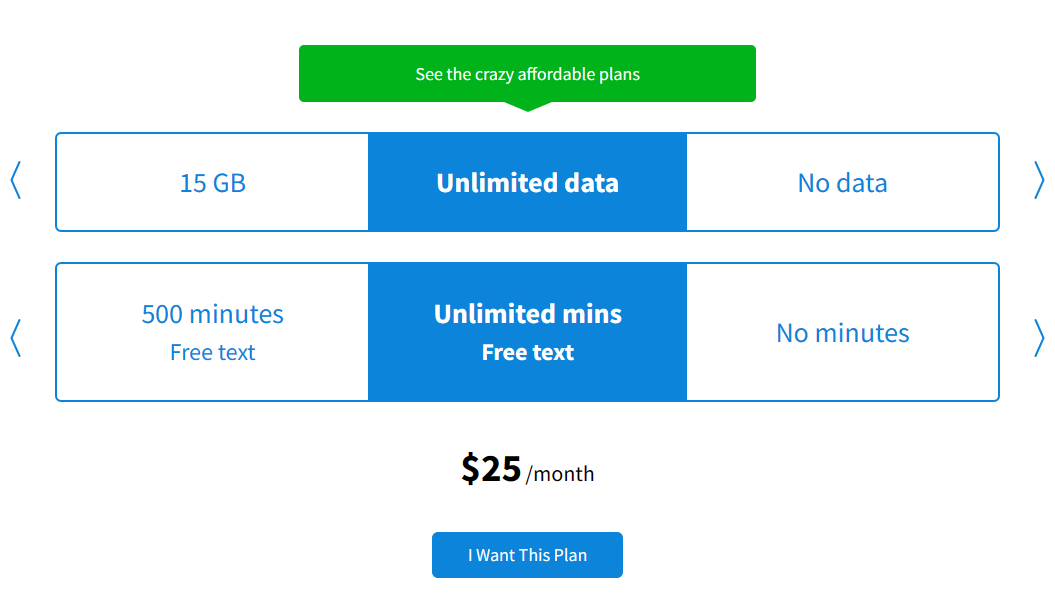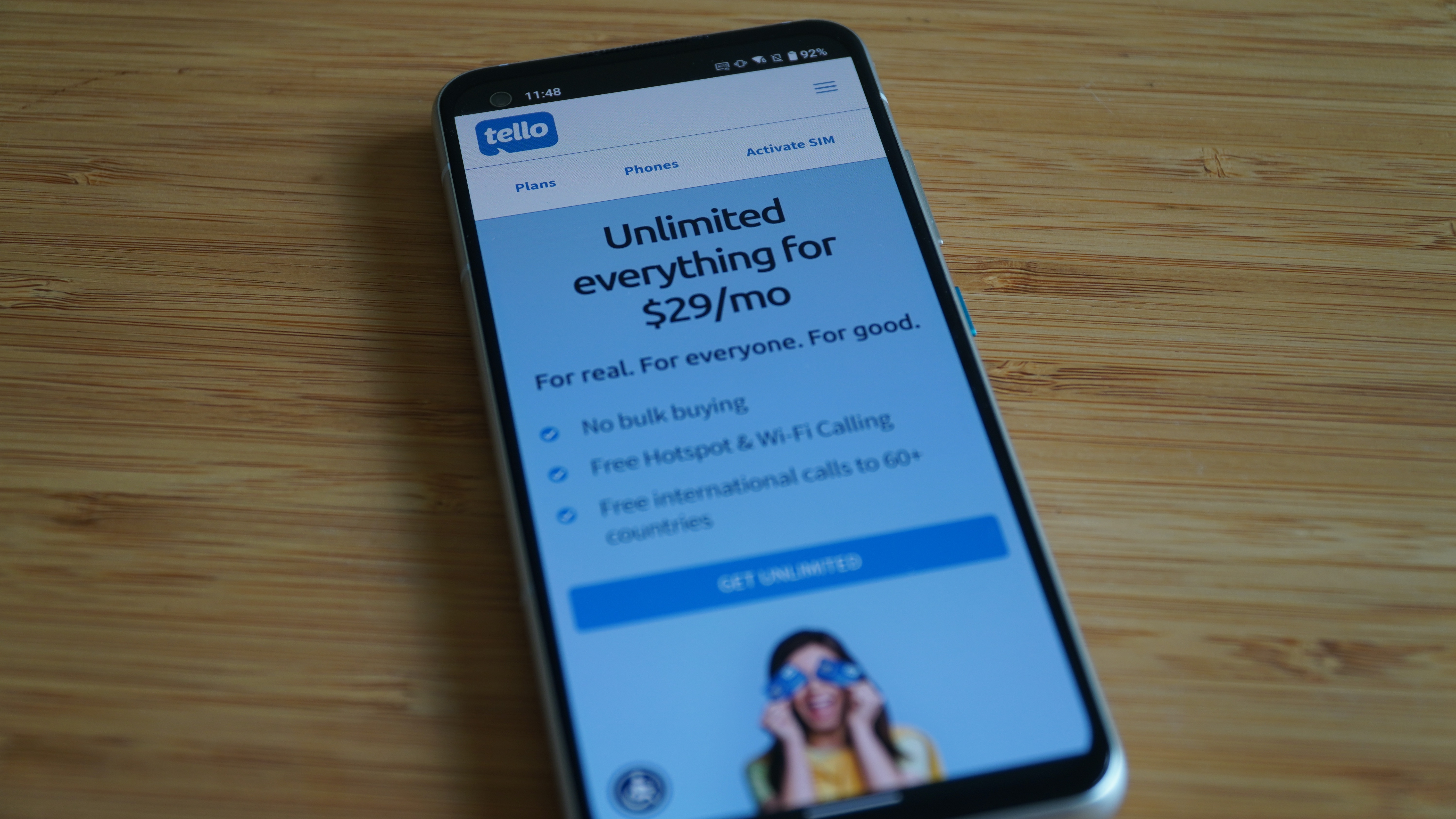Tello vs. Google Fi: Which flexible prepaid carrier is the best?
Two terrific T-Mobile MVNOs battle it out!

Affordably awesome
Tello makes phone service simple by ditching traditional plans and sticking with a fully customizable plan structure, ensuring that users don't waste money on data they won't use. Hotspot comes with any plan with data, and so do international calls to more than 60 countries. It uses the T-Mobile network for great LTE and 5G coverage.
Pros
- Reliable T-Mobile coverage
- Flexible plans can save you money
- Great phone support
- Extremely cheap for light users
Cons
- Unlimited plan limited to 35GB

Incredible international perks
Google Fi Wireless has earned quite a reputation among tech enthusiasts, thanks to its flexibility and international roaming benefits. It offers three flexible plans, each having unlimited talk and text, spam call blocking, family location sharing, and more. You also get smartwatch connectivity with selected models.
Pros
- Solid international roaming options
- Savings with family plans
- Good phone support
- Bill Protection feature
Cons
- Unlimited plans are expensive
Comparing Tello vs. Google Fi makes quite a lot of sense, as both are among the best prepaid carriers available out there. Not just that, both these Mobile Virtual Network Operators (MVNOs) use T-Mobile's network infrastructure to offer a diverse range of perks, including high-speed 5G access, unlimited talk and text, and more. That being said, this is where the similarities largely end.
Tello Mobile has a customizable plan structure that lets you decide exactly what you want (and don't want) with your wireless service. Conversely, Google Fi Wireless has three plans that offer everything from international usage benefits to premium data. Although Google Fi's plans are quite loaded, Tello's plans are ridiculously affordable. Let's take a closer look at both these prepaid carriers and see which one is right for your needs.
- MVNO deals: Mint Mobile | Visible | Boost | Tello | Google Fi Wireless
Pay only for what you use
Tello and Google Fi look quite similar with their flexible plans, but how they save you money can be quite different. Google Fi's base plan is much more expensive, but the prices get a lot closer to Tello's if you have multiple lines. Google Fi also leads with its international usage benefits, although Tello's support in that regard is still a lot more significant than many other prepaid carriers.
| Header Cell - Column 0 | Tello Mobile | Google Fi Wireless |
|---|---|---|
| Network | T-Mobile | T-Mobile |
| Unlimited plan data limit | 35GB | 35GB or 50GB |
| 5G access | Included | Included |
| Multi-line discounts | No | Yes |
| Mobile hotspot | Included | Included |
| International calling | More than 60 destinations | More than 200 destinations |
Many people won't touch the 35GB limit, but it's still worth keeping in mind if you're a heavy user. Some other best cell phone plans offer truly unlimited data but if you are a Google Fi user, you'll need to upgrade to the Unlimited Plus plan to get 50GB of data. Visible, as an example, offers unlimited high-speed data though it's a priority over most other carriers.
If you run out of this unlimited data allotment with either of the two MVNOs, it's not a big deal as you'll still have connectivity, albeit at a reduced speed. Even then, stuff like messaging, email, and even simple web browsing should work without issues. If you're hitting the usage limit frequently, then you'll probably going to want to check out another carrier.
What kind of coverage you'll get?

Both Tello and Google Fi use T-Mobile for majority of their coverage, which includes both LTE and 5G access. The only catch is that you'll need a 'Designed for Fi' phone to take advantage of Google Fi's network switching. If your phone isn't compatible, it can still be used with Google Fi, but you'll only connect to the T-Mobile network. With Tello, you'll always connect to the T-Mobile network.
Still, with all Pixels as well as many Galaxies and even some Moto phones supported, there are plenty of choices if you want to make sure you're connected to the entire network. Some of our best Android phones like the Google Pixel 8 and Samsung Galaxy S24 Ultra work with the entire Google Fi network.
Get the latest news from Android Central, your trusted companion in the world of Android
Tello Mobile's plans
Tello really only has a single plan with multiple configurations. This approach allows you to pick exactly what you need so you don't end up wasting money on unwanted stuff, like unlimited calling. You can choose how much data you want or how many talk minutes you need, or even skip one of these altogether. Do note that free texts come with any plan that has talk time minutes.
Tello's data choices start with no data, 1GB, 2GB, 5GB, 10GB, 15GB, and unlimited. Minutes start with none, 100, 300, 500, and unlimited. Tello's unlimited data has a cap of 35GB after which speeds are reduced, but at a monthly price of $25, it's still a great option for many users.

If you're unsure, you can simply start off with one of Tello's pre-configured plans for a month and make adjustments based on what you end up using in that month.

Tello includes some basic international features that should be more than adequate for most customers. You get free calling to more than 60 countries, including most popular destinations like Mexico, India, and Canada. If you need to make many calls abroad, Tello can save you some money over many other prepaid carriers.
Google Fi Wireless' plans
Google Fi Wireless has three plans, starting with the 'Flexible' plan. This costs $20 per month (for a single line) and offers unlimited talk and text, with data available at $10 per GB. You only pay for what you use with Google Fi so if you only use 500MB of data, you only pay around $5 for it. While this plan can get expensive quickly, 'Bill Protection' kicks in at 6GB of usage, and data is free. However, your data speeds are reduced after 15GB of usage with this plan.
The 'Unlimited Plus' plan has all of the base features of the Flexible plan, as well as up to 50GB of high-speed data. This plan costs $65 per month for a single line. Also, both these plans also come with hotspot usage and data-only SIM support. A data-only SIM can be used with another device that only needs data service. This can be especially useful if you travel abroad and need a reliable internet connection for multiple devices.
Still, most people don't need these international features. and this is where the third 'Simply Unlimited' comes into the picture. It costs $50 per month for a single line and gives you 35GB of high-speed data. You have to give up most international features, including roaming, but you get more than 200 international calling locations for free. International roaming is not included. Hotspot is included, but it's capped at 5GB.
While Google Fi Wireless is pretty expensive for a single line, things change when you bring the family along. You can add up to six lines to your Fi account, and each new line gets you more discount. For example, the Simply Unlimited plan comes down to $30 per line with three lines, and the Unlimited Plus comes down to $45 per line with three lines.
Tello vs. Google Fi: Phone compatibility
Both Tello and Google Fi carriers will work with nearly any unlocked phone. So long as you have an unlocked device with support for T-Mobile's LTE or 5G network, you can get connected. Tello sells a modest selection of Android phones as well as a few iPhones. Although many are refurbished or pre-owned, there are some new options too.
Google Fi Wireless is a bit more complicated, with two tiers of phone support. The first is 'Compatible with Fi'; this level uses the T-Mobile network and works with most unlocked phones. The second is 'Designed for Fi'; this level includes phones that use both Google Fi's coverage partners and a few extra features like a Google VPN for an automatic Wi-Fi connection. Google's Pixel phones obviously come under the latter category, and you can check your phone's compatibility before signing up on Google Fi's website anyway.
Tello vs. Google Fi: Which should you get?

As tough as it is to pick one between Tello vs. Google Fi, we can say that the latter is a good choice for many users, even if they never leave the country. The simple billing structure and multi-line savings on the unlimited plans are great, and the fact that you only pay for the data you use is also a nice addition. If you need the international features, no other carrier offers the same roaming functionality, with even postpaid carriers struggling to match Google's offering.
On the other hand, Tello sticks to the basics and is ideal for users who simply want a no-fuss wireless service without all kinds of bells and whistles thrown into the mix. Even if you just want a light plan with only talk time minutes and don't care about data, Tello can give you that. Of course, you do get things like international calling to more than 60 countries for free. No matter how you customize your plan, you'll save quite a lot with Tello.
- MVNO deals: Mint Mobile | Visible | Boost | Tello | Google Fi Wireless

When Samuel is not writing about networking or 5G at Android Central, he spends most of his time researching computer components and obsessing over what CPU goes into the ultimate Windows 98 computer. It's the Pentium 3.
- Rajat SharmaContributor
- Patrick FarmereCommerce Editor
You must confirm your public display name before commenting
Please logout and then login again, you will then be prompted to enter your display name.
